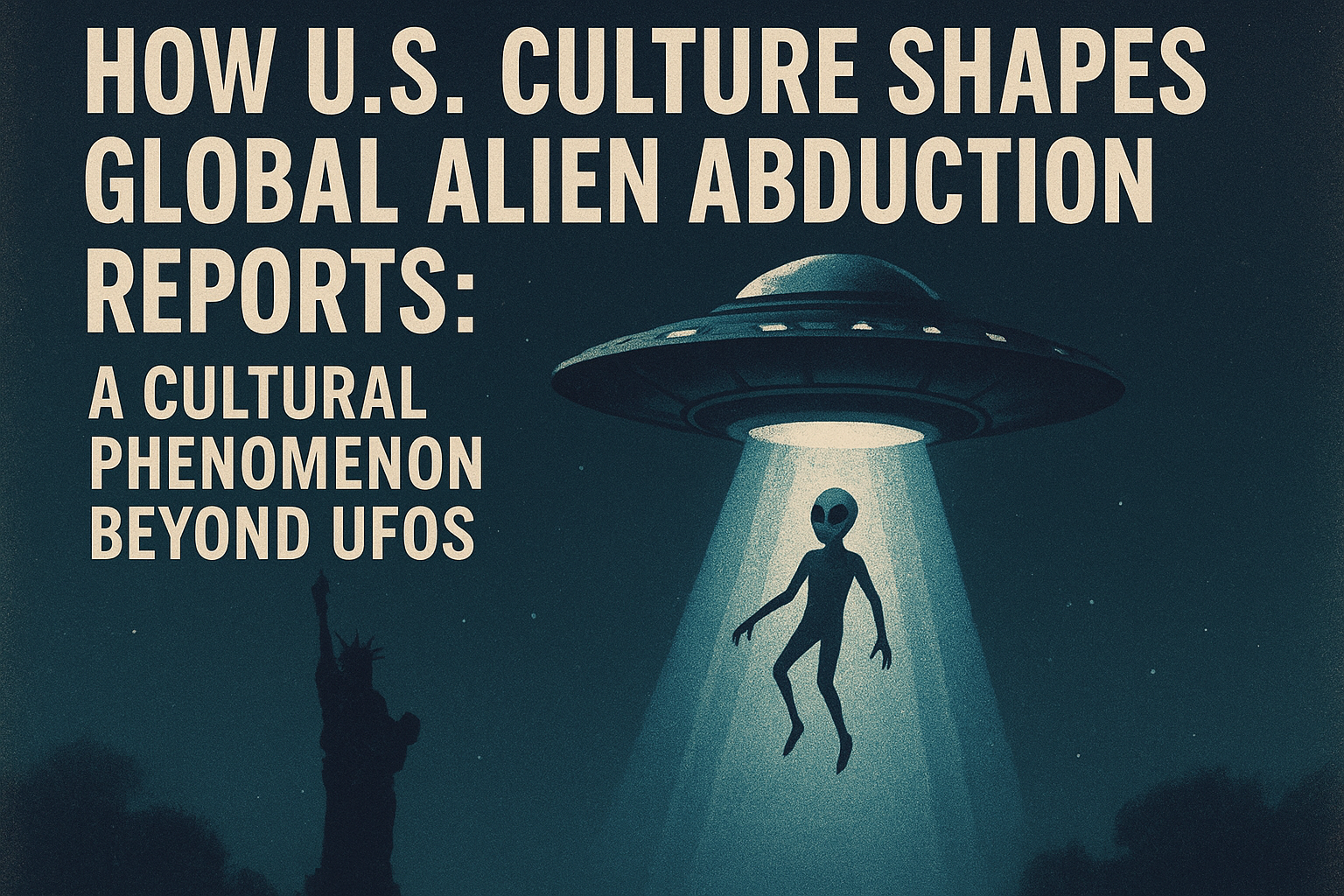This website is in the works! Things will get fixed with time.
Alien abduction stories have fascinated humanity for decades. From chilling encounters with mysterious beings to eerie missing time episodes, these tales are a staple of paranormal lore. But did you know that the vast majority of alien abduction reports originate from the United States — and countries culturally influenced by it?
This article explores how American media, culture, and ufology research have shaped the way alien abductions are reported worldwide. We’ll look at statistics, cultural impacts, and why UFO encounters outside the U.S. often reflect local beliefs or remain underreported.
The U.S. Dominance in Alien Abduction Reports
The United States accounts for approximately 70-80% of all reported alien abduction cases worldwide. Researchers estimate there are over 2,000 well-documented abduction reports in the U.S., spanning from the 1950s to the present.
This dominance is no accident. Several factors converge in the U.S. to create a fertile environment for abduction narratives:
- Robust UFO and paranormal research communities that actively document and publicize cases.
- Popular books and movies that introduced and normalized abduction concepts.
- A culture that tends to be open to paranormal and extraordinary claims, encouraging people to share their stories.
For example, Whitley Strieber’s 1987 book Communion brought alien abduction into mainstream awareness. Movies like Close Encounters of the Third Kind (1977) and TV shows like The X-Files further embedded these ideas in popular imagination.
Numbers and Data: Global Abduction Cases by Region
While the U.S. dominates, alien abduction reports exist worldwide, though in smaller numbers and often influenced by local culture.
| Region / Country | Estimated Number of Reported Abductions | Notes |
|---|---|---|
| United States | 2,000 – 3,000+ | Largest and most researched body of cases |
| Canada | 100 – 300 | Influenced by U.S. media, similar cultural context |
| United Kingdom | 100 – 400 | Active UFO groups; English-language media influence |
| Australia | 100 – 300 | Strong cultural ties to UK and US media |
| Brazil | 200 – 500 | Unique cases like Varginha incident, US cultural influence present |
| Scandinavia (Finland, Sweden, Norway) | 50 – 150 | Mix of UFO and local folklore influences |
| Russia & CIS countries | 100 – 300 | Reports often mingled with traditional beliefs |
| South Africa | 50 – 100 | Growing UFO interest; fewer publicized cases |
| Other Europe (Germany, France, Italy, Spain) | 200 – 400 | Diverse cultural frameworks affect reporting |
Note: These numbers combine well-documented and anecdotal reports collected by ufologists, researchers, and organizations globally.
Media Influence: How Hollywood and Literature Mold Perception
The U.S. entertainment industry has played a pivotal role in shaping how people perceive alien abductions. Before the 1970s, stories of UFOs and abductions were niche and scattered. But with the release of influential films and books, abduction narratives became a recognizable cultural script.
Films & TV
- Close Encounters of the Third Kind (1977) depicted friendly, enigmatic alien contact.
- E.T. the Extra-Terrestrial (1982) humanized aliens as benevolent beings.
- The X-Files (1993–2018) popularized government conspiracies, alien abductions, and shadowy cover-ups.
- Communion (book and 1989 film adaptation) presented a deeply personal, terrifying account of alien abduction.
These stories established common motifs — gray-skinned aliens, missing time, medical examinations — that became reference points globally.
Books and Ufology Research
Beyond entertainment, U.S. researchers like Budd Hopkins, John Mack, and David Jacobs documented hundreds of abduction cases, developing frameworks to analyze them. Their work disseminated internationally, encouraging others to interpret unusual experiences within the “alien abduction” paradigm.
Cultural Transmission: Why Countries Influenced by U.S. Media Report More Abductions
Countries with strong cultural and linguistic ties to the U.S. (Canada, UK, Australia) report more alien abduction cases, likely because:
- Shared language facilitates access to U.S. literature and media.
- Cultural openness to paranormal subjects encourages disclosure.
- Established UFO research communities help legitimize experiences.
For example, Canada has a relatively high number of abduction reports compared to other non-U.S. countries, reflecting its cultural proximity.
In Brazil, while indigenous beliefs influence some interpretations, the strong presence of American and European media shapes many abduction narratives. The Varginha incident (1996), often dubbed “Brazil’s Roswell,” mirrors U.S. abduction stories but with unique local flavor.
Underreporting and Cultural Variations Elsewhere
In many parts of the world, alien abduction reports are rare or framed differently due to:
- Cultural taboos around discussing paranormal phenomena.
- Interpretations through spiritual, religious, or folklore lenses rather than extraterrestrial.
- Lack of access to UFO literature and research communities.
- Social stigma and fear of ridicule.
For example, in many Asian and African cultures, experiences resembling abductions may be described as spirit possession, ancestral visitations, or mystical events rather than alien encounters.
This cultural framing impacts how people process, report, and interpret their experiences — often leading to fewer explicit “alien abduction” cases in statistics.
The Psychological Aspect: Cultural Scripts and Memory Formation
Some psychologists argue that alien abduction narratives may be influenced by cultural scripts. When people experience sleep paralysis, vivid dreams, or unexplained phenomena, they might interpret these through the lens of popular alien stories if that framework is familiar.
This does not invalidate experiences but suggests culture shapes the way memories and narratives form.
The Role of Ufology and Social Networks
The presence of UFO organizations, online communities, and support groups — many originating in or inspired by U.S. culture — provides spaces where people can share abduction stories without judgment.
These networks increase visibility of abduction phenomena and encourage reporting, which is less common in cultures lacking such communities.
Conclusion: Alien Abductions as a Cultural Phenomenon
While the question of whether alien abductions are “real” extraterrestrial events remains open and debated, the pattern of global reporting reveals a strong cultural influence rooted in U.S. media and ufology.
The prevalence of abduction stories in the U.S. and culturally influenced countries underscores how media, language, and social acceptance shape human experiences and their interpretation.
Understanding this cultural context is crucial for studying alien abduction phenomena, as it helps distinguish between universal human experiences and those molded by cultural narratives.








